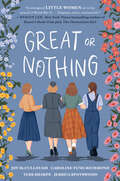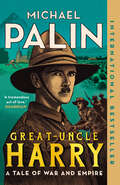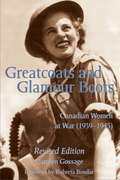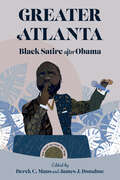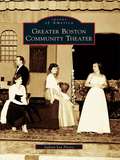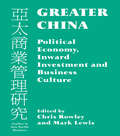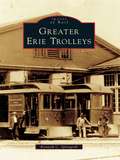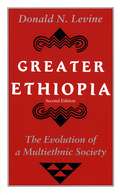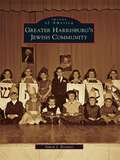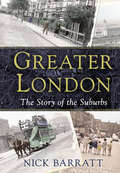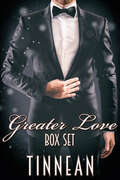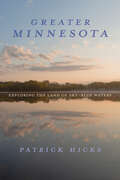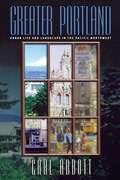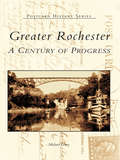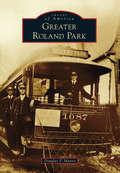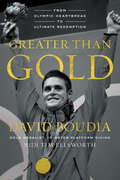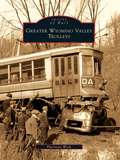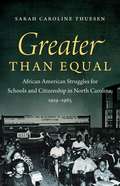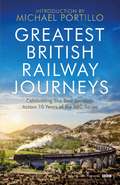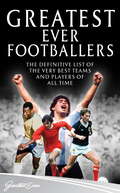- Table View
- List View
Great Yachts of Long Island's North Shore
by Robert B. MackayAt the turn of the 20th century, Long Island's North Shore, the so-called Gold Coast, was becoming the most desirable residential area in the United States. Estates belonging to American captains of finance and industry lined the bluffs and bays from the city line to Eaton's Neck. Some of the nation's most renowned families--including the Astors, Bakers, Huttons, Morgans, Pratts, Sloans, Roosevelts, Whitneys, and Vanderbilts--used their yachts for racing, cruising, commuting, or epic voyages. These vessels regularly plied the waters of the North Shore and bolstered the development of yacht clubs like the New York and Seawanhaka Corinthian--city institutions that established stations at Glen Cove and Centre Island, respectively. These clubs served to provide many outlets for the social gatherings that accompanied this pastime. Although the Great Depression and then World War II would bring the era of the great yachts to an end, a wealth of images remain that can be marveled at a century later.
Great Zimbabwe: The Iron Age of South Central Africa
by Joseph O. VogelFirst Published in 1994. This research guide was written as a comprehensive, though by no means exhaustive, survey of the literature pertinent to studying the indigenous complex societies of south central Africa. Although the paramount focus of the compilation was the archaeology of Great Zimbabwe, the author has drawn from a broad geographical area and a wider period of time than that usually associated with Zimbabwean culture in order to demonstrate the cultural background for the growth of monumental trading towns in south central Africa.
Great or Nothing
by Jessica Spotswood Joy McCullough Tess Sharpe Caroline Tung RichmondA reimagining of Little Women set in 1942, when the United States is suddenly embroiled in the second World War, this story, told from each March sister's point of view, is one of grief, love, and self-discovery.In the fall of 1942, the United States is still reeling from the attack on Pearl Harbor. While the US starts sending troops to the front, the March family of Concord, Massachusetts grieves their own enormous loss: the death of their daughter, Beth. Under the strain of their grief, Beth's remaining sisters fracture, each going their own way with Jo nursing her wounds and building planes in Connecticut, Meg holding down the home front with Marmee, and Amy living a secret life as a Red Cross volunteer in London--the same city where one Mr. Theodore Laurence is stationed as an army pilot.Each March sister's point of view is written by a separate author, three in prose and Beth's in verse, still holding the family together from beyond the grave. Woven together, these threads tell a story of finding one's way in a world undergoing catastrophic change.
Great-Uncle Harry: A Tale of War and Empire
by Michael PalinMichael Palin recreates the extraordinary life and tragic death of a First World War soldier—his great-uncle Harry.Some years ago a stash of family records was handed down to Michael Palin, among which were photos of an enigmatic young man in army uniform, as well as photos of the same young man as a teenager looking uncomfortable at family gatherings. This, Michael learned, was his Great-Uncle Harry, born in 1884, died in 1916. He had previously had no idea that he had a Great-Uncle Harry, much less that his life was cut short at the age of 32 when he was killed in the Battle of the Somme. The discovery both shocked him and made him want to know much more.The quest that followed involved hundreds of hours of painstaking detective work. Michael dug out every bit of family gossip and correspondence he could. He studied every relevant official document. He tracked down what remained of his great-uncle Harry's diaries and letters, and pored over photographs of First World War battle scenes to see whether Harry appeared in any of them. He walked the route Harry took on that fatal, final day of his life amid the mud of northern France. And as he did so, a life that had previously existed in the shadows was revealed to him.Great-Uncle Harry is an utterly compelling account of an ordinary man who led an extraordinary life. A blend of biography, history, travelogue and personal memoir, this is Michael Palin at his very finest.
Greatcoats and Glamour Boots: Canadian Women at War, 1939-1945, Revised Edition
by Carolyn Gossage Roberta BondarWomen in the military? To many, never was too soon. But by 1940, British women were out "doing their bit" for the war effort, and Canadians battled for that same right. Young Canadian women wanted to serve their country, "to free a man to fight," as the recruiting posters urged. By the war’s end almost 50,000 of them were in the forces.Carolyn Gossage has compiled a fascinating collage of anecdotal and documentary material. The colourful story of Canada’s "forgotten women" - those who volunteered for service during World War II in the RCAF Women’s division, the Canadian Women’s Army Corps (CWAC) and the Women’s Royal Canadian Naval Service (Wrens) - entertains and enlightens.
Greater Atlanta: Black Satire after Obama
by Derek C. Maus and James J. DonahueContributions by GerShun Avilez, Lola Boorman, Thomas Britt, John Brooks, Phillip James Martinez Cortes, Derek DiMatteo, Tikenya Foster-Singletary, Alexandra Glavanakova, Erica-Brittany Horhn, Matthias Klestil, Abigail Jinju Lee, Derek C. Maus, Danielle Fuentes Morgan, Derek Conrad Murray, Kinohi Nishikawa, Sarah O'Brien, Keyana Parks, and Emily Ruth RutterThe seventeen essays in Greater Atlanta: Black Satire after Obama collectively argue that in the years after the widespread hopefulness surrounding Barack Obama’s election as president waned, Black satire began to reveal a profound shift in US culture. Using the four seasons of the FX television show Atlanta (2016–22) as a springboard, the collection examines more than a dozen novels, films, and television shows that together reveal the ways in which Black satire has developed in response to contemporary cultural dynamics. Contributors reveal increased scorn toward self-proclaimed allies in the existential struggle still facing African Americans today.Having started its production within a few weeks of Donald Trump’s (in)famous escalator ride in 2015, Atlanta in many ways is the perfect commentary on the absurdities of the contemporary cultural moment. The series exemplifies a significant development in contemporary Black satire, which largely eschews expectations of reform and instead offers an exasperated self-affirmation that echoes the declaration that Black Lives Matter.Given anti-Black racism’s lengthy history, overt stimuli for outrage have predictably commanded African American satirists’ attention through the years. However, more recent works emphasize the willful ignorance underlying that history. As the volume shows, this has led to the exposure of performative allyship, virtue signaling, slacktivism, and other duplicitous forms of purported support as empty, oblivious gestures that ultimately harm African Americans as grievously as unconcealed bigotry.
Greater Boston Community Theater
by Judson Lee PierceThe roots of community theater can be traced back to before the Revolutionary War. In the years that followed, many towns throughout America were fortunate to have both professional and amateur acting companies. The evolution of the moving picture forced many of these professional theaters to close their doors, but theater lovers in small communities still wanted the real thing, live theater. Today there are numerous community theater groups around the Boston area, including the oldest continuing community theater group in the country, the Footlight Club, which was founded in 1877. In the spirit of community, many theater companies donate to charities and sponsor playwriting contests and scholarship programs. They all share a common goal: bring live theater to suburban communities. Greater Boston Community Theater presents rare photographs from more than a dozen community theaters to document and celebrate the rich tapestry of theater life.
Greater China: Political Economy, Inward Investment and Business Culture (Routledge Library Editions: Business And Economics In Asia Ser. #15)
by Mark Lewis Chris RowleyA critical analysis of the reasons underlying the emergence of the Asia Pacific as an economic superpower and the need for judicious evaluation of the likely shape and character of the region's future development. The aim of this collection is to illuminate key areas of debate concerning the People's Republic of China, Hong Kong and Taiwan here collectively referred to as Greater China in the belief that the destiny of the Pacific Rim as a whole will be decisively influenced by economic and political developments in this particular region.
Greater Erie Trolleys
by Kenneth C. SpringirthWhen the first electric trolley car entered service in Erie in 1889, it revolutionized public transportation in the region. Within a few years, Erie became a major trolley hub linking the eastern and central United States. With the exception of a 15-mile gap at Little Falls, one could travel from New York City to Chicago via Erie. Greater Erie Trolleys covers the network of trolley lines that operated between Erie, Conneaut, Buffalo, and Meadville. Greater Erie Trolleys illustrates the vital role trolley cars played in the expansion of the urban population. It documents the beginning of pleasure travel with photographs of the special trolley car excursions from Erie to Elk Park for picnics, dances, and sporting events. Ridership began to decline just as the automobile came on the scene and dirt roads became paved highways. Eventually the lines were abandoned, but the trolleys left an important mark in transportation history.
Greater Ethiopia: The Evolution of a Multiethnic Society
by Donald N. LevineGreater Ethiopia combines history, anthropology, and sociology to answer two major questions. Why did Ethiopia remain independent under the onslaught of European expansionism while other African political entities were colonized? And why must Ethiopia be considered a single cultural region despite its political, religious, and linguistic diversity? Donald Levine's interdisciplinary study makes a substantial contribution both to Ethiopian interpretive history and to sociological analysis. In his new preface, Levine examines Ethiopia since the overthrow of the monarchy in the 1970s. "Ethiopian scholarship is in Professor Levine's debt. . . . He has performed an important task with panache, urbanity, and learning."—Edward Ullendorff, Times Literary Supplement "Upon rereading this book, it strikes the reader how broad in scope, how innovative in approach, and how stimulating in arguments this book was when it came out. . . . In the past twenty years it has inspired anthropological and historical research, stimulated theoretical debate about Ethiopia's cultural and historical development, and given the impetus to modern political thinking about the complexities and challenges of Ethiopia as a country. The text thus easily remains an absolute must for any Ethiopianist scholar to read and digest."-J. Abbink, Journal of Modern African Studies
Greater Harrisburg's Jewish Community (Images of America)
by Simon J. BronnerThe Jewish community of Greater Harrisburg became established after 1825, mostly by German immigrants who took up peddling and clothing trades. They were attracted inland from East Coast cities to Harrisburg, the growing upriver hub of trade that became Pennsylvania's state capital in 1812. The community grew to 600 residents by the end of the 19th century and drew attention for a level of civic engagement well beyond that of comparably sized settlements. Immigration from eastern Europe in the early 20th century contributed to a tenfold increase of the Jewish population and a changing ethnic and commercial profile. In the years that followed, the community added an impressive range of institutions and continued to have a reputation for activism. Emerging as the hub of Jewish life in central Pennsylvania, the community produced internationally renowned figures in Jewish affairs, business, and arts.
Greater Hartford Firefighting (Images of America)
by The Connecticut Fire MuseumThe Hartford area has a rich history of firefighting, beginning with the bucket brigades of early colonial history. As devastating blazes razed many key buildings and entire neighborhoods, these small teams developed into large volunteer groups. The city finally realized that paid fire departments were needed, and the modern firefighting world bloomed with technological advances in equipment and procedures. The evolution of these brave firefighting groups is richly chronicled in Greater Hartford Firefighting.
Greater London: The Story of the Suburbs
by Nick BarrattLondon's suburbs may stretch for well over 600 square miles, but in historical accounts of the capital they tend to take something of a back seat. In Greater London, historian Nick Barratt places them firmly centre stage, tracing their journey from hamlets and villages far out in the open countryside to fully fledged urban enclaves, simultaneously demonstrating the crucial role they have played in the creation of today's metropolis.Starting in the first century AD, he shows how the tiny settlements that grew up in the Thames Valley gradually developed, and how they were shaped by their proximity to the city. He describes the spread of the first suburbs beyond the city walls, and traces the ebb and flow of population as people moved in to find jobs or away to escape London's noise and bustle. He charts the transformation wrought by the coming of the railways, the fight to preserve Hampstead Heath, Epping Forest and other green spaces and the struggle to create a London-wide form of government. He gives an account of wartime destruction and peacetime reconstruction, and then brings the story to the present with a description of the very varied nature of today's suburbs and their inhabitants. In the process, he evokes Tudor Hackney and Georgian Hampton, explains why Victorian Battersea and Finchley were so different from one another, and follows Islington's fall from grace and subsequent recovery.Magnificently illustrated throughout with contemporary engravings and photographs, this is the essential history for anyone who has ever lived in London.
Greater Love Box Set
by TinneanJames Trevalyan comes from a long line of men who served the Crown with their gift of a voice with compelling power, and kept that tradition going while he loved and lived with Jeremy Waters. When Jeremy died in James's arms, he resolved to live without love. His family keeps him connected to the world. And then came Tanner, a clever, handsome agent who joins him in an ongoing undercover mission.J Tanner is a valued member of National Security 3 and in love with his superior, James Trevalyan. He hides his love, certain James could not return it. But after completing a mission that almost costs him his life, he’s asked by James to help unravel the mystery of James’s beloved sister’s disappearance. As a colleague, of course he agrees.Will these two ever realize they’re meant for each other?This box set contains the two books Greater Love Hath No Man and Darling James.
Greater Minnesota: Exploring the Land of Sky-Blue Waters (Heartland History)
by Patrick HicksA witty, wise, and affectionate journey to every corner of the North Star State. After years of living abroad, writer and poet Patrick Hicks returns to Minnesota only to find that his home state feels like a foreign country.In the tradition of Bill Bryson and Paul Theroux, Greater Minnesota is an account of Hicks's discoveries. Half travelogue, half history, and fully delightful in its exploration of new places and people, this book follows Hicks as he ventures to the North Shore, the Iron Range, the Southwest, and even Up North in the dead of winter. As he travels the back roads of the state, he visits the Mayo Clinic, the SPAM Museum, ancient petroglyphs, the US Hockey Hall of Fame, the birthplace of Minnesota Public Radio, a world-class aviation museum hidden on the prairie, a lost forest, the humble start of the Mississippi River, and other stops along the way that are both surprising and intriguing.Through conversations with people on his travels, Greater Minnesota brings the reader along as he searches for what it means to be a Minnesotan.
Greater Portland: Urban Life and Landscape in the Pacific Northwest
by Carl AbbottSelected by Choice magazine as an Outstanding Academic Title for 2001<P><P> It has been called one of the nation's most livable regions, ranked among the best managed cities in America, hailed as a top spot to work, and favored as a great place to do business, enjoy the arts, pursue outdoor recreation, and make one's home. Indeed, years of cooperative urban planning between developers and those interested in ecology and habitability have transformed Portland from a provincial western city into an exemplary American metropolis. Its thriving downtown, its strong neighborhoods, and its pioneering efforts at local management have brought a steady procession of journalists, scholars, and civic leaders to investigate the "Portland style" that values dialogue and consensus, treats politics as a civic duty, and assumes that it is possible to work toward public good.Probing behind the press clippings, acclaimed urban historian Carl Abbott examines the character of contemporary Portland--its people, politics, and public life--and the region's history and geography in order to discover how Portland has achieved its reputation as one of the most progressive and livable cities in the United States and to determine whether typical pressures of urban growth are pushing Portland back toward the national norm.In Greater Portland, Abbott argues that the city cannot be understood without reference to its place. Its rivers, hills, and broader regional setting have shaped the economy and the cityscape. Portlanders are Oregonians, Northwesteners, Cascadians; they value their city as much for where it is as for what it is, and this powerful sense of place nurtures a distinctive civic culture. Tracing the ways in which Portlanders have talked and thought about their city, Abbott reveals the tensions between their diverse visions of the future and plans for development.Most citizens of Portland desire a balance between continuity and change, one that supports urban progress but actively monitors its effects on the region's expansive green space and on the community's culture. This strong civic participation in city planning and politics is what gives greater Portland its unique character, a positive setting for class integration, neighborhood revitalization, and civic values. The result, Abbott confirms, is a region whose unique initiatives remain a model of American urban planning.
Greater Rochester: A Century of Progress (Postcard History)
by Michael LeavyGreater Rochester: A Century of Progress presents the glory years of Rochester in more than two hundred stunning images, beautifully crafted by photographers, engravers, lithographers, and illustrators. It reveals how pioneers built a wilderness town around a river and waterfalls, and how it grew into a truly unique American city. It recognizes the great contributions of courageous individuals who advanced their issues and improved their communities, among them Frederick Douglass, Susan B. Anthony, and George Eastman, and the marvels of the day-the hotels, bridges, canals, railroads, and other accomplishments.
Greater Roland Park
by Douglas P. MunroDeveloper Edward Bouton revolutionized American life with the creation of Roland Park, one of the country's first "streetcar suburbs," located in Baltimore, Maryland. Unlike many late-19th-century suburbs, Roland Park is well preserved, and many would consider it a late-Victorian version of Colonial Williamsburg. In the 20th century, Bouton also created Roland Park's sister developments: Guilford, Homeland, and Original Northwood. The latter two were developed after the heyday of the streetcar; in contrast, Roland Park without streetcars would have been unthinkable. Even now, trolley memories abound in the form of surviving old trackage and waiting shelters. Greater Roland Park explores the development of the suburb and its neighbors: Embla Park, Evergreen, Keswick, Lake Falls, Lake Roland, New North Roland Park, The Orchards, Poplar Hill, and Tuxedo Park.
Greater Than Gold: From Olympic Heartbreak to Ultimate Redemption
by Tim Ellsworth David BoudiaOne of America&’s most heralded young divers, David Boudia twice went for Olympic gold, training obsessively and whole-heartedly for success. In his first Olympics, he failed miserably, not winning a single medal. Four years later saw a different story: he mounted the podium twice, winning both gold and bronze. The difference? In the intervening years, he&’d changed the focus of his quest from seeking glory for himself to giving glory to God. In Greater Than Gold, Boudia provides a behind-the-scenes access to the rarefied world of world-class athletics while also showing readers that when they place their hope in God, they receive what they&’ve been seeking all along.
Greater Wyoming Valley Trolleys
by Harrison WickThe Wyoming Valley is nestled among the Endless Mountains in Luzerne County with the scenic Susquehanna River meandering through it. Best known for its rich deposits of anthracite coal, the Wyoming Valley was first colonized by Connecticut settlers in 1769. Electric trolleys served many urban centers in Pennsylvania. Trolley service in the Wyoming Valley started in 1888 and lasted for more than 60 years. Trolley lines went through the boroughs and townships of Ashley, Courtdale, Edwardsville, Forty Fort, Hanover, Kingston, Larksville, Miners Mills, Nanticoke, Parsons, Pittston, Plains, Plymouth, Sugar Notch, West Pittston, West Wyoming, Wilkes-Barre, and Wyoming. Greater Wyoming Valley Trolleys features rare photographs dating from the 1890s to 1950 documenting the trolley system and the communities of the Wyoming Valley.
Greater than Equal
by Sarah Caroline ThuesenDuring the half century preceding widespread school integration, black North Carolinians engaged in a dramatic struggle for equal educational opportunity as segregated schooling flourished. Drawing on archival records and oral histories, Sarah Thuesen gives voice to students, parents, teachers, school officials, and civic leaders to reconstruct this high-stakes drama. She explores how African Americans pressed for equality in curricula, higher education, teacher salaries, and school facilities; how white officials co-opted equalization as a means of forestalling integration; and, finally, how black activism for equality evolved into a fight for something "greater than equal--integrated schools that served as models of civic inclusion. These battles persisted into the Brown era, mobilized black communities, narrowed material disparities, fostered black school pride, and profoundly shaped the eventual movement for desegregation. Thuesen emphasizes that the remarkable achievements of this activism should not obscure the inherent limitations of a fight for equality in a segregated society. In fact, these unresolved struggles are emblematic of fault lines that developed across the South, and serve as an urgent reminder of the inextricable connections between educational equality, racial diversity, and the achievement of first-class citizenship.
Greater than Ever: New York_s Ultimate Comeback Story
by Daniel DoctoroffDeputy Mayor Daniel L. Doctoroff led New York's dramatic and unexpected economic resurgence after the September 11 terrorist attacks. With Mayor Michael Bloomberg, he developed a remarkably ambitious five-borough economic development plan to not only recover from the attacks but to completely transform New York's economy: New neighborhoods were created. Hundreds of thousands of jobs were generated. The largest municipal affordable housing plan in American history was completed. Ground Zero was rebuilt. And New York adopted a pathbreaking sustainability plan.None of this was straightforward. New York has some of the most entrenched financial and political interests anywhere, and it has a population that is quick to let its public officials know exactly what is on its mind. Doctoroff's plans for a New York Olympic Games and a stadium on the West Side crashed and burned, but phoenix-like he engineered the transformation of the city anyway.Greater than Ever is a bracing adventure--when can-do attitude dove headlong into New York's unique realpolitik of "fuggedaboutit"--during which the city was changed for the better.
Greatest British Railway Journeys: Celebrating the greatest journeys from the BBC's beloved railway travel series
by Michael PortilloIt is now over a decade since the much-loved Great British Railway Journeys series set off on its incredible run discovering the cultural, social and engineering landscape of the United Kingdom through the prism of George Bradshaw's Handbook to rail travel. Veteran politician and ex cabinet minister Michael Portillo has since presented eleven seasons of this ever-popular show on BBC Two, covering every part of the existing train network in Britain, as well as others that were closed as a result of the Beeching Report in 1963. Across a decade of these journeys, Portillo has celebrated how every corner of England, Scotland, Wales and Northern Ireland was opened up by the railway line as a result of the Industrial Revolution, thus giving fans a unique insight into our shared past of train travel since the Victorian era. With the anniversary, this new collection will celebrate Michael's top fifty journeys from the hundreds he has covered, adding more insight and analysis to some of the greatest railway lines, stations, bridges, viaducts and tunnels the Victorians built to create the world we now live in. From Paddington Station to the Clifton Suspension Bridge; the Southend Pier line to the milk wagons departing from Blake Hall Station. An unrivalled narrative to be treasured. Greatest British Railway Journeys is both a celebratory and charming ride through our country's beloved history - all from the unique position of a train seat.
Greatest Ever Footballers
by The Greatest EverWho is the greatest ever footballer? Pele? Maradona? Cruyff? Who is the greatest ever British footballer? Charlton? Best? Dalglish? Who is the country's greatest defender, midfielder, goalkeeper?What are the greatest teams fielded by every club in the English and Scottish leagues?And what is the greatest international team of all time? How do you decide? Well, the facts don't lie.Based on a unique and comprehensive network of national and international football databases, compiled by football statisticians across the globe, each player is awarded points (for games played for both club and country) according to a series of criteria, such as win, lose, draw, whether they scored, goals conceded, captaincy, etc. Points accumulated for each game are also weighted in line with the competition in which the game featured and the quality of the opponents played. Each player's points are then fed through to the Greatest Ever compilers who update their lists on a weekly basis.The end result is the only objective, comprehensive and incontrovertible record of who are the greatest talents ever to have graced the beautiful game.
Greatest Rivalries in Sports
by David Scott Chris Dortch Ted Keith Stewart MandelStories about the greatest rivalries in college football, college basketball, pro football, and pro baseball.


